|
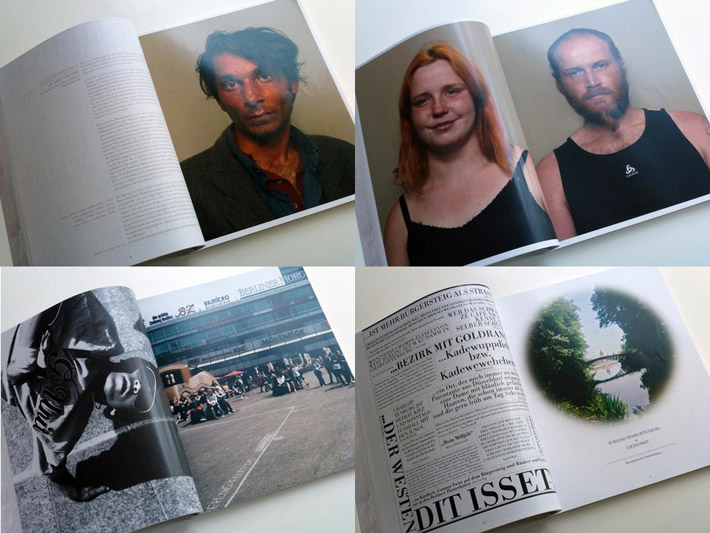
Berlin Haushoch is a magazine designed, edited, photographed and largely written by three people — Ana Lessing, Alexandra Bald and Esra Rotthoff.
Each issue (3 so far) covers the people and daily life of one district in Berlin and, taking a minimum of one year to produce, it comes out when it’s good and ready. Their site currently says of the upcoming, one-year-plus-in-the-making Issue 4, it kommt wenn es kommt (comes when it comes). And this message has been up for quite some time!
While all good editors become immersed in their material, the people from Berlin Haushoch go several levels deeper: they set up their studio in that part of the city they want to cover and work there, getting to know the locals and acknowledging what they call ‘the little things’, the details of everyday life. In Germany it’s called lupenjournalismus (magnifying glass journalism).
The following is taken from a conversation I had with Ana and Alexandra in their Berlin studio.
Graeme Smith
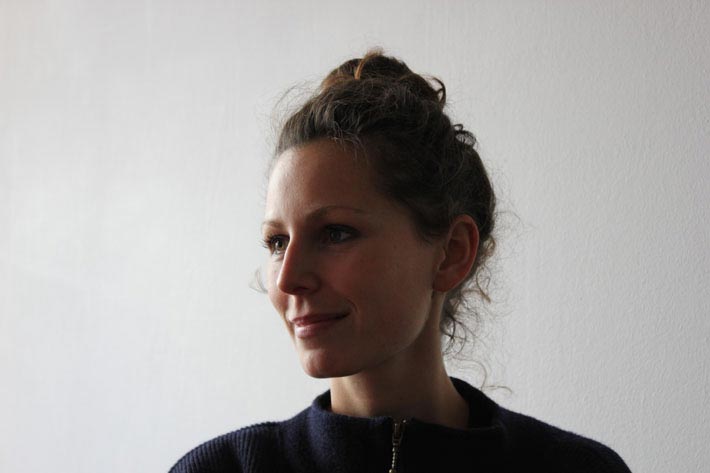
Ana Lessing
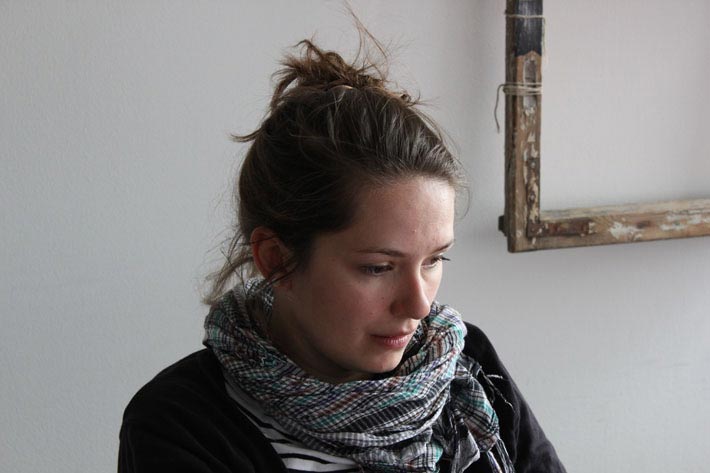
Alexandra Bald
Graeme Smith
How did you start Berlin Haushoch? Why did you start it?
Ana Lessing
The most funny thing… it has something to do with Australia. I was in Australia and Alex was in Rotterdam, and the third person, Esra, was in Barcelona. It was the first time we went outside of Berlin to work. After coming back we had this special feeling—looking at the city from a different viewpoint. We came back from these trips and decided we have to do something. We had to get our work out to the people and show them what we do, and also look around our city, like you do sometimes when you’ve been away.
Alexandra Bald
We went to Marzahn, the first district we made the magazine about.
Ana
We went there and we were looking for exhibition spaces because we heard rumours that there were empty plattenbau flats you could rent out or do parties and exhibitions in. That’s the reason why we went there first, and then we thought, well this place is amazing. We never go out there. Like you’re in a whole different country.
Graeme
When you start to really look at your everyday surroundings, it’s seems that you’re in another city. Normally you just walk past all these everyday images.
So because you dislocate yourself you see things differently… and it’s probably a shortcut to understanding a place because… I’m talking too much…
Ana
No. That’s exactly how it works.
Alex
Of course this whole thing is very personal… very subjective. But that’s also what makes it special. It’s our journey and it’s Marzahn or Wedding or Charlottenburg through our eyes.
Ana
So the Marzahn issue was the work of one year. We started going every day to the district and even rented ourselves into a pension to be there for a longer time, to stay in the area. With our photography and illustration we started to get a feeling of the place and we thought that the best thing to do would be to put all this together along with some information about it.
Alex
And also to take these stories beyond Marzahn.
Ana
To give it to other people to see, to read, to look at it through the medium of a magazine. So we produced the first one. And then it got all kind of crazy because it was just like a free project for us.
Alex
The way we’ve developed this magazine… the only thing which is always the same is the size. The paper, the number of pages is always different…
We always try to reflect the feeling we have about a district in the type, the layout, how the magazine looks. At that moment, it started to be serious; when we did the second one on Wedding. When we did the first one we didn’t actually know it was going to be a series.
Ana
And suddenly we found that we had a lot of press about it. Journalists came up and said to us they love that way of… they call it in German lupenjournalismus (magnifying glass journalism).
Alex
Because we take so much time and so much passion and look at things really… we look at things people don’t really look at any more. The attention to the everyday. We always say we give to the little things —the details of life, we give them a place.
Graeme
What’s your personal idea behind the magazine?
Ana
I think for us it’s a more artistic way of seeing things in places and then doing something with it.
Alex
It’s a discovery-journey with an artistic eye. And then it was the process of graphic design. We started with the idea that we always set up our design studio to that district.
Ana
So you knew the guy from the kiosk or the bakery, you know?
Alex
That’s how you create a network and you need this network to do such a magazine. We always search for a studio in that district and we work there every day. At a minimum we always take a a year for each magazine. So we work there—also doing other jobs. The idea is to experience everyday life in that district.
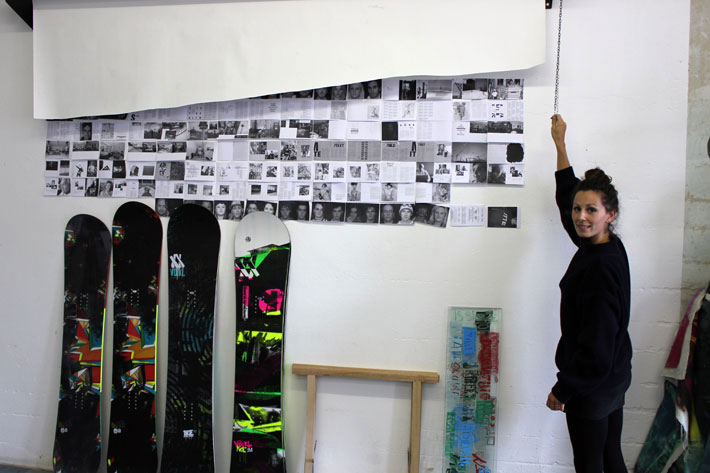
Graeme
I love that. You’ve built that editorial method into your work process.
Ana
And I think even if we do other editorial jobs it’s still our deepest…how do you say… we need to know the stuff we’re working with. Even if we do other projects.
Alex
We’re always really into the material. We really like to… we’re not the kind of designers to just get the text and images, load it into the computer and that’s it. We’re always interested in the theory of what it’s about.
Graeme
This is something I’ve been asking everyone—usually at the end of the discussion but seeing how we seem to have moved on to it… Does the object you design, that you make, make you more visible to yourself?
Ana
It’s difficult to say because it’s the work of three. So the very special thing in a work group is that three people come together to find a new way of speaking together. Because it doesn’t work if I have to put all my voice into that exchange so it really feels like… it’s partly my work but it’s also the work of three creative people together so…
Graeme
You just mentioned speaking. Even though the three of you work together, what I’m interested in personally is someone’s voice. Obviously between the three of you this thing does have some form of a singular voice. What may that be?
Ana
I think that the main thing you can take out of the magazine is what I said before, the love of the detail… and it’s not just… it’s everywhere. In the way we look at things, how we photograph them, and always with a lot of respect.
Alex
It’s about how we treat the content.
Ana
I think it’s the amazing thing that you can find everywhere so much beauty.
Alex
You appreciate your town or the world you live in.
Ana
We’re always going into another world. We often don’t have much to do with it. We may not have much in common…
Alex
But it’s next door.
Ana
And suddenly you find the beauty in it. And I think it’s always that. Searching for what makes it special.
Graeme
Beauty is a word I use a lot. Too much. But when you think of it there’s no other word that quite means the same thing. So you keep using it.
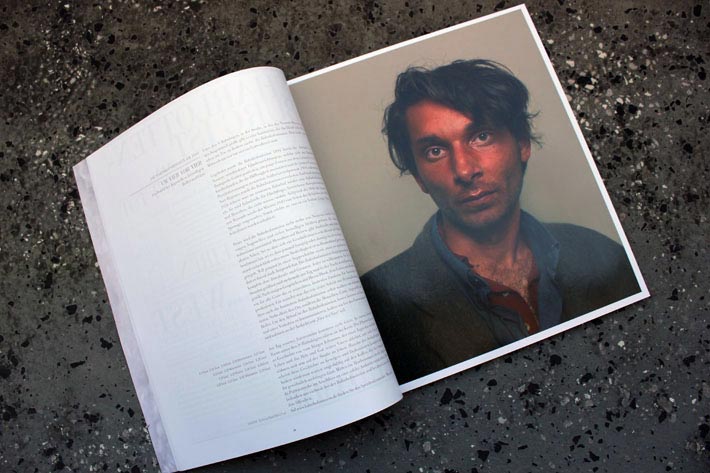
Alex
For example still here we did a very…it was for us very hard and touchy for us. Touchy. You say that? Touching? We visited a homeless place and it was really interesting work for us. How can we take pictures of a person who is homeless, who is having a hard time but still try to find the beauty in that person. We produced pictures for them—like passport pictures…
Ana
So they can use them again for their documents.
Alex
You need documents everywhere, for instance, to get free food…
Ana
And a lot of people don’t have anything. So the first way we thought we could help them was to provide them with pictures.
Graeme
Do you take the photographs?
Ana
All of them. We do everything that’s visual.
We do everything. The publishing, the graphic design, the photographs. We have journalists who write text and we also write text.
Graeme
That’s good. You have ownership. You just do it.
Alex
I think the thing we earn through this magazine —doing our work—is that you grow, you personally grow because you have such strong experiences with people and you reflect them.
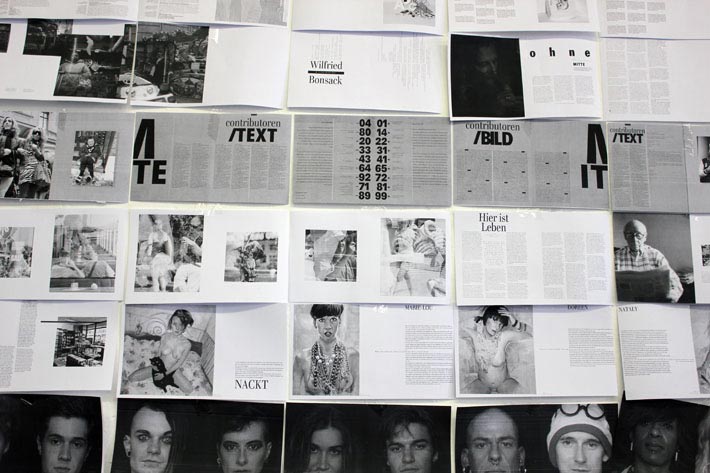
Ana
We were talking so much about this three days we spent there. It was so touching. You think about social problems in another way. You can reflect on things much better when you visit such a place and talk to the people and understand how things go wrong.
Graeme
You’ve just answered that question I asked a bit earlier about becoming more visible to yourself.
Ana
A really nice thing about the work is that we’re photographers and designers. In this project we do everything so it’s really nice afterwards.
Alex
For the production we always start searching for things and just walking through the district —let’s say for 3 or 4 months—just walking, looking, meeting people, just talking to people. And then we start to take pictures and make stories.
Ana
But at the end of everything we start to think how could the design be… how could it look, which kind of feeling do we want, what the type should be like… then later on that process is really important—to be designing with our work. It makes it all… rounded.
Graeme
Do you do most of the writing yourselves?
Alex
We always write the text no-one else could write because we went there and had the experience.
Graeme
I’m told that there used to be a lot more holes between the buildings, but now they’re starting to be filled. So there are those in-between spaces. Both real and psychological. I met someone from an architectural practice a few days ago. They use those in-between spaces and they use public spaces as laboratories to come up with ideas to make the city better. I sense that there’s something in this magazine about those spaces in-between.
Alex
They’re disappearing. Ten years ago there were a lot more empty spaces. Now some are clubs or squats.
Graeme
From what I’ve seen, an interesting part of the design culture here is that there seems to be a lot of different spaces and people are starting to use those spaces in interesting ways. I know that rents have gone up recently but by world standards—western standards—work-spaces seem cheap.
Alex
But people here earn much less.
Graeme
Another thing I’ve noticed is… they do good work, very good work, that’s why I’ve sought them out—but they appear to live very modestly.
Alex
I notice that also. A lot of people who are artists or designers in Berlin, they always have their own projects and things where they can also find this space within their work. Of course there are these commerce-only designers but still there’s a feeling in the design scene here that everyone is also searching for their own spaces. To create something for themselves.
Graeme
Tell me more about the Marzahn issue.
Alex
When we went there in 2005 / 2006 Marzahn was in the media and had a very bad image. They said they’re only poor uneducated people living there, not working, some are fascists, and really the Marzahn image was very bad.
Ana
And then we came and they were quite suspicious, and they were like, oh no I don’t want you to take a photo of me and oh no, we don’t want these bad articles again. You’re from a magazine…
And then they were so pleased when they had the magazine and they found out wow this is so positive! And that’s where we live and we like it here.
Graeme
Do you find it hard to go there and you know… because you’re educated and by comparison, well off…
Ana
Yes. Sometimes. We often have this discussion. Of course there’s always this little bit of voyeurism as a photographer but that’s also with the rich people; entering those upper class flats. It’s the same. Like…wow…
Alex
At that moment when you take a picture of someone, of course you’re getting something from them personally—and the person could say no—but if you do it with respect…it’s…
Graeme
That seems to come through in the photographs.
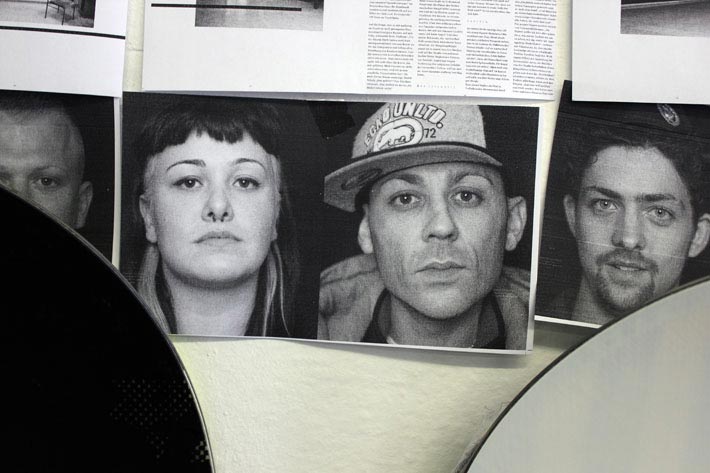
Ana
Exactly. It’s ok for us.
The nice thing also with this work is that we had talks in London and Glasgow and universities, and the nice thing is you could do this project everywhere. Not just Berlin. Everyone who sees that magazine or the work —how we do it—they say, oh we could do something like that in our city.
Alex
There’s so much to tell about your surroundings.
Ana
We would love to go to another city and do a magazine with some students or something.
Graeme
Go to Australia. You know Sydney…
Ana
I know Sydney. Actually I did a work when I was there. I took a picture every day and at the end, before I left, I had an exhibition in Sydney and made a whole wall with those pictures and a lot of people from Sydney were like…oh… It’s always like that. If you look at your surroundings differently it makes for a great work.
Graeme
Is Berlin a slow city or a fast city?
Ana
Compared to what?
Graeme
Yes. Compared to what. And if you ask that about any city, for instance Tokyo, which I’m a little more familiar with, it’s both. It’s extremely fast—all those people stampeding between train platforms in those huge confusing stations, and then you go down a little alley on your bike and it’s slow, slow, slow, like another world. Initially I had this sort of framework for interviews in Berlin that went: small, slow things that flourish in big, fast cities. But now I’m inclined to change it to small things that flourish in big cities. I think all the people I’ve met here do things that fit into that category.
Ana
I think that Berlin is a slow city but hard.
Graeme
Hard?
Ana
It’s slow but rough. Strong.
Graeme
Like a bit rough around the edges?
Alex
It’s not cute.
Ana
It’s slow and it gives you the space, the feeling of room and not too much rush and business-business and everyone has some freedom. But, at the same time it’s a little bit rough and hard.
And when I’m in cities that are too cute… I don’t like it. Because I’m so used to that rough part and I really love the contrast of both things.
Alex
That’s why I prefer Rotterdam to Amsterdam.
Graeme
Is Amsterdam cute?
Alex
Yes.
Ana
Berlin is slow but it’s not relaxed.
Graeme
There’s a tension?
Ana
I was born in Berlin and it was always a little bit rough. I think it’s because of the history of the wall…everything!
Alex
Berlin has always been a place of special circumstances. Now in post wall, post GDR times it’s also special because so much has been built in a short amount of time and with so many people entering the city from all over the world. This is also special because many other big cities grow slowly.
Graeme
There are aspects of design culture that are about being cool. The ones I’m thinking of are the negative aspects. A political commentator, I think it was Nick Cohen, talked about the anxiety of cool: the struggle to get out in front and control the production of cultural information. There’s this part of design culture that’s about the next thing. Do you think there’s much of that in Berlin?
Ana
It’s growing. It also comes from the change that’s happening here.
Graeme
My feeling is that the anxiety of cool is here like everywhere else but it’s a bit softer here. For instance, there’s a particular kind of London cool, but it’s not like that here.
Alex
Actually I think Berlin is the next big thing.
|






